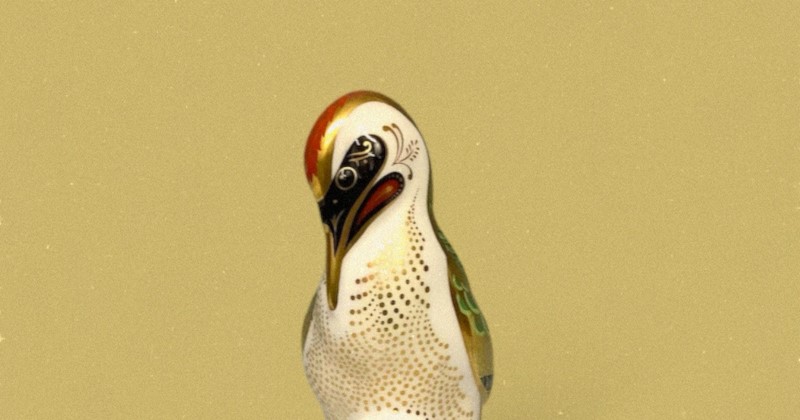I have a confession to make: I am no football enthusiast. It’s not that I haven’t been t o a football match, either. When I was about 10 and we lived in leafy outer suburban Surrey, my step-father took me to Selhurst Park to see Crystal Place versus Queen’s Park Rangers, and about twelve years later (as a student) I was coerced into going to the Baseball Ground to watch Derby County play – purely coincidentally – Crystal Palace. On both occasions I was cold, my feet hurt (we stood in those days) and I was bored. I suppose that, had I evinced any essential enthusiasm for the proceedings, I would have shouted and wildly waved my hands about, rendering me at least warmer!
But I made another mistake: I failed to preserve the programme on both occasions. Then, after both my parents had died, I was taken in by an uncle and aunt, the latter being the joint-proprietor of an antique shop in Hereford and who stood at various antique fairs in the area. She specialised in paper ephemera, postcards and small antiques, and I would frequently help out at fairs, seeing quite number of football programmes pass through her hands usually at 50p or £1 a time.
Yet it was not until I began to work for Bamford’s, decades later, that I realised how dedicatedly collectible they are. Today my two programmes would have produced a modest return: the former in pristine condition perhaps £7-10 and the latter about £2. At Bamford’s we typically sell them in groups and, assuming the mix includes some classics, estimate them at around £60-100 for say, twenty-five. Buying this way, of course, makes them much cheaper per unit).
In the late nineteenth century, clubs began issuing what are usually called match cards to spectators. These were double sided with the teams, either in lists or in the approximate formation they would use in the game, often surrounded by local advertisements. These can go for anything from £80 upwards.
Programmes proper came along a decade or two later with editorial comment, articles and some statistics. Top London clubs like Arsenal and Chelsea even employed programme editors who operated under pseudonyms. Most clubs issued their own programmes, with an interesting exception being Merseyside rivals Everton and Liverpool who co-operated together, issuing a joint programme for the home games each weekend (one club's home league game and the other club's reserve team home game) from 1904/05 until 1934/35.
In the 1920s, when the Cup Final moved to Wembley, programmes more like the ones we are used to today were produced and command high prices. This was the period in which club colours started to be used as part of the cover designs, whereas after the War, the practice of changing the programme design each season became well established.
Initially, programmes were quite large, usually quarto, with the down-side that they got folded to fit in the overcoat pocket, with deleterious effects upon subsequent condition. In the 1950s, though, some clubs made them octavo, or even ‘pocket’ sized, but increasingly embellished with photographs, and this continued during the following decade with increasing amounts of colour and arresting designs appearing in the 1970s, when printing firms often produced programmes for a number of teams, although this era also ushered in great fluctuations in size.
From the 1990s there has been a gradual expansion of content and the introduction of glossy finishes, producing something much closer to souvenir standard, and of course the more durable for it. Today they are almost all A4 sized and often 48/96 pages long.
The older the programme, the higher will be its value, but scarcity introduces an element of uncertainty. Generally speaking programmes from before the 1970s are worth more than those dating from, later, where £1.50-£5 is the norm. In the more recent era, it is postponed matches and replays which can increase the price, whilst programmes from the 1940s tend to command prices of £10 or more, with from £30 to near £100 being the norm for the preceding two decades.
Cup finals, of course are much more sought after, testimonial matches honouring retiring players of real stature and first matches under notable managers also add a premium. For instance the match I attended at Derby was a very early Clough/Taylor one, a fact of which I was, of course, blissfully ignorant. A programme for the 1882 FA Cup Final made £35,250 at auction four years ago, whilst the previous highest price (Spurs v Sheffield United 1901 FA Cup final at Crystal Palace) was £14,400 and the Cup Final programme for 1924 made £6,500. For the Derby County supporter the real nirvana is the 1946 cup-final programme (Derby beat Charlton Athletic 4-1 in extra time by the way). This was the first after the war, making it collectable for a constituency well outside Rams fans, and the only final ever contested by Derby. A clean example might cost you (judging by more recent auction results) between £175 and £240.
Football programmes are fairly easy to store (although modern ones take up obscene amount of shelf-space compared to pre-1990s ones) and if one sticks to post-1950 examples, on the whole it is an inexpensive hobby, apart from misprints, typos and other defects as-sold, which tend to add to the price.
Oh, and if you had a past member of the family fairly wedded to spending Saturday afternoons getting pneumonia at the local football ground, search the loft: there might conceivably be a dusty old box of old programmes waiting to be liberated onto the market!



